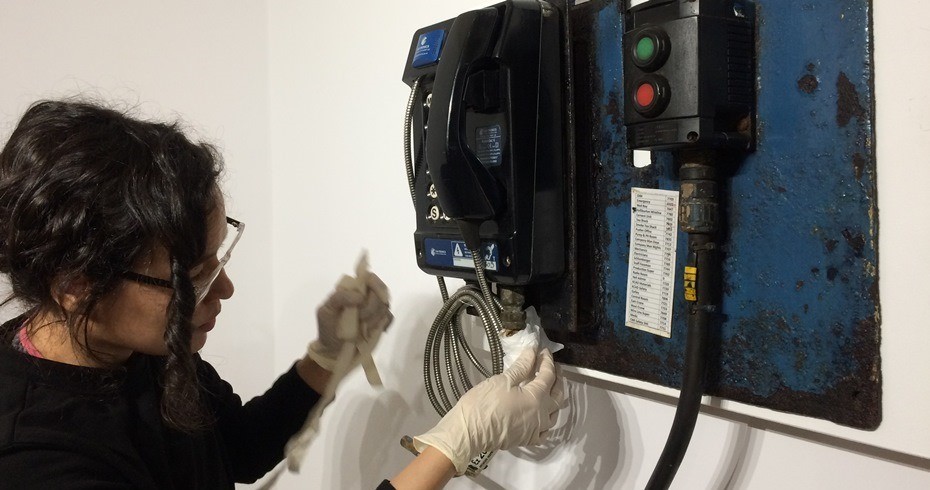Loan and behold! Installing objects for the Age of Oil Exhibition

In 2019 the Scottish Maritime Museum Dumbarton hosted Age of Oil, a temporary exhibition and collaboration between Visual Artist Sue Jane Taylor and National Museums Scotland. Along with Taylor’s artworks depicting life on North Sea oil platforms, objects from the Piper Alpha platform were on display. In this blog post we look at the Installation of the National Museum Scotland loans was a key part of putting the exhibition together.
 A lot of preparation goes into organising a loan. As the Exhibitions and Events Officer I design the layout of the exhibition and decide where the loaned objects will go. When doing so I must consider the loan requirements. Does the lending institution suggest the object needs an exhibition case or should it be put on open display? How far from the barrier must the object be? I must take into account the ideal environmental conditions. What is the humidity and temperature of the exhibition space? Once I have answered these questions I submit environmental readings, exhibition layouts, case and mount designs for approval. When the lending institute is happy we decided on a loan install date.
A lot of preparation goes into organising a loan. As the Exhibitions and Events Officer I design the layout of the exhibition and decide where the loaned objects will go. When doing so I must consider the loan requirements. Does the lending institution suggest the object needs an exhibition case or should it be put on open display? How far from the barrier must the object be? I must take into account the ideal environmental conditions. What is the humidity and temperature of the exhibition space? Once I have answered these questions I submit environmental readings, exhibition layouts, case and mount designs for approval. When the lending institute is happy we decided on a loan install date.
The object loans for the Age of Oil exhibition were a fascinating mix of pieces. I particularly liked the Drillers Telephone with its industrial sized tubes and rusty edges. During Taylor’s residencies she, along with workers from Murchison and Brent Delta, selected components of the decommissioned platforms to save. These became physical links to a world the public would rarely see otherwise; they became part of the National Museums Scotland permanent collection.
Each loan object came with its own challenges. One object, the Pipeline Pig, a piece of equipment used to clean out the oil pipeline, was very heavy and bulky. The large red and black tube gets its name from the squealing it makes as it passes through the pipes. I had to make sure I knew how we would move such a heavy object. I made sure we had a trolley, enough people to lift it and the right PPE (Personal Protective Equipment), in this case steel toe cap boots. I marked out a route from the delivery truck to the exhibition space in advance and ensured the plinth the museum had built was able to take the weight.
On the complete opposite end of the spectrum, the smallest and most delicate object of the loan was a glass vial of crude oil, the last to be extracted from Murchison. The packing and handling of this object, and the canister of crude oil that would be displayed beside, was crucial – we didn’t want to spill the contents or smash the glass! I wrote a Risk Assessment so there was a plan of action if this did occur. Placing them in a robust case ensured these objects would not be touched or be exposed to vibrations from visitor footfall.

The couriers from National Museum Scotland, Curator of Technology Ellie Swinbank and Registrar Charlotte Rusk checked the condition of the objects and then helped install them. They will do a further inspection when we de-install. This will check that there hasn’t been any damage to the objects whilst on loan. Once the objects were safely in place I added the caption panels and locked the case. I was really pleased with how smoothly the installation went and how well the objects worked in the space.
Images from top: finishing touches to the driller's telephone; installing the oil canister; unwrapping the pipeline pig.

